Escalation Dynamics Jacob
Visit to download the full and correct content document: https://ebookmass.com/product/line-on-fire-ceasefire-violations-and-india-pakistan-es calation-dynamics-jacob/
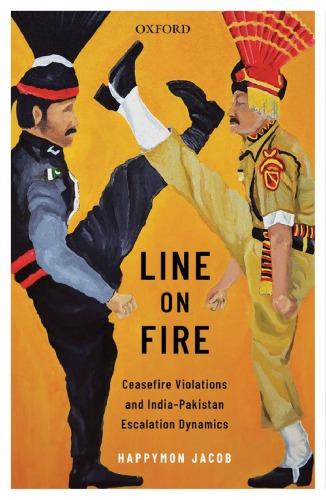
More products digital (pdf, epub, mobi) instant download maybe you interests ...
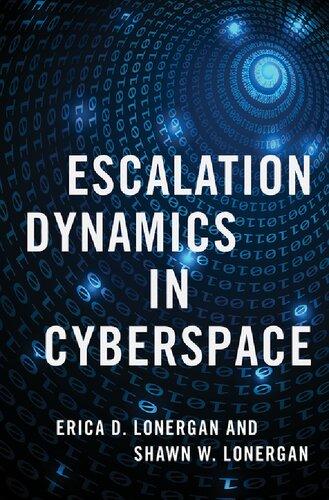
Escalation Dynamics in Cyberspace Erica D. Lonergan
https://ebookmass.com/product/escalation-dynamics-in-cyberspaceerica-d-lonergan/

Ceasefire City: Militarism, Capitalism, and Urbanism in Dimapur Dolly Kikon
https://ebookmass.com/product/ceasefire-city-militarismcapitalism-and-urbanism-in-dimapur-dolly-kikon/
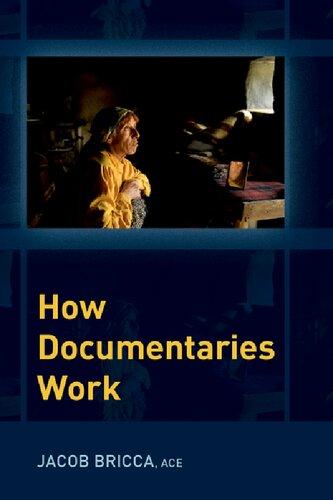
How Documentaries Work Jacob Bricca
https://ebookmass.com/product/how-documentaries-work-jacobbricca/

Introduction to 80×86 Assembly Language and Computer Architecture – Ebook PDF Version
https://ebookmass.com/product/introduction-to-8086-assemblylanguage-and-computer-architecture-ebook-pdf-version/

Medical Nihilism First Edition Jacob Stegenga
https://ebookmass.com/product/medical-nihilism-first-editionjacob-stegenga/

Like a House on Fire (Cursebreakers, Inc. 1) MM A. M. Rose https://ebookmass.com/product/like-a-house-on-fire-cursebreakersinc-1-mm-a-m-rose/

The County Line Steve Weddle
https://ebookmass.com/product/the-county-line-steve-weddle/

Jacob Schiff and the Art of Risk 1st ed. Edition Adam Gower
https://ebookmass.com/product/jacob-schiff-and-the-art-ofrisk-1st-ed-edition-adam-gower/

Of Fate and Fire Amanda Bouchet
https://ebookmass.com/product/of-fate-and-fire-amanda-bouchet/
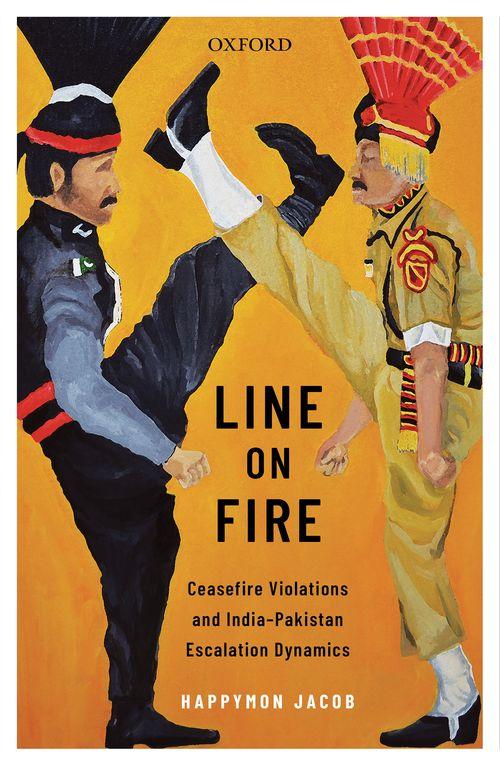
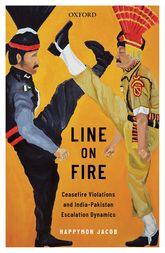
Line on Fire: Ceasefire Violations and IndiaPakistan Escalation Dynamics
Happymon Jacob, Sumit Ganguly, and E. Sridharan
Print publication date: 2019
Print ISBN-13: 9780199489893
Published to Oxford Scholarship Online: May 2019
DOI: 10.1093/oso/9780199489893.001.0001
Title Pages
Happymon Jacob
(p.i) Line on Fire
(p.v) The Oxford International Relations in South Asia Series (p.vii) IRSA
The Oxford International Relations in South Asia Series Line on Fire
(p.viii) Copyright Page
After a long period of relative isolation during the Cold War years, contemporary South Asia has grown immensely in its significance in the global political and economic order. This ascendancy has two key dimensions. First, the emergence of India as a potential economic and political power that follows its acquisition of nuclear weapons and its fitful embrace of economic liberalization. Second, the persistent instability along India’s borders continues to undermine any attempts at achieving political harmony in the region: fellow nuclear-armed state Pakistan is beset with chronic domestic political upheavals; Afghanistan is paralysed and trapped with internecine warfare and weak political institutions; Sri Lanka is confronted by an uncertain future with a disenchanted Tamil minority; Nepal is caught in a vortex of political and legal uncertainty as it forges a new constitution; and Bangladesh is overwhelmed by a tumultuous political climate.
India’s rising position as an important player in global economic and political affairs warrants extra-regional and international attention. The rapidly evolving strategic role and importance of South Asia in the world demands focused analyses of foreign and security policies within and towards the region. The
present series addresses these concerns. It consists of original, theoretically grounded, empirically rich, timely, and topical volumes oriented towards contemporary and future developments in one of the most populous and diverse corners of the world.
Sumit Ganguly is professor of political science and holds the Rabindranath Tagore Chair in Indian Cultures and Civilizations, Indiana University, Bloomington, USA.
E. Sridharan is academic director, University of Pennsylvania Institute for the Advanced Study of India, New Delhi. (p.vi)


Oxford University Press is a department of the University of Oxford. It furthers the University’s objective of excellence in research, scholarship, and education by publishing worldwide. Oxford is a registered trademark of Oxford University Press in the UK and in certain other countries.
Published in India by Oxford University Press
2/11 Ground Floor, Ansari Road, Daryaganj, New Delhi 110 002, India
© Oxford University Press 2019
The moral rights of the authors have been asserted.
First Edition published in 2019
All rights reserved. No part of this publication may be reproduced, stored in a retrieval system, or transmitted, in any form or by any means, without the prior permission in writing of Oxford University Press, or as expressly permitted by law, by licence, or under terms agreed with the appropriate reprographics rights organization. Enquiries concerning reproduction outside the scope of the above should be sent to the Rights Department, Oxford University Press, at the
address above.
You must not circulate this work in any other form and you must impose this same condition on any acquirer.
ISBN-13 (print edition): 978-0-19-948989-3
ISBN-10 (print edition): 0-19-948989-0
ISBN-13 (eBook): 978-0-19-909547-6
ISBN-10 (eBook): 0-19-909547-7
Typeset in Adobe Jenson Pro 10.5/13 by The Graphics Solution, New Delhi 110 092 Printed in India by Nutech Print Services India

Line on Fire: Ceasefire Violations and IndiaPakistan Escalation Dynamics
Happymon Jacob, Sumit Ganguly, and E. Sridharan
Print publication date: 2019
Print ISBN-13: 9780199489893
Published to Oxford Scholarship Online: May 2019
DOI: 10.1093/oso/9780199489893.001.0001
(p.ii) Endorsement
Happymon Jacob
This book offers much more than a mere clinical analysis of the nature and causes of ceasefire violations in J&K, and how they impact India–Pakistan escalation dynamics. What makes the book distinct and different from the majority of such publications is that, in addition to formulating the key issues, the author applies certain theoretical models to explain India–Pakistan escalation dynamics. A valid point the author makes is that viewing the escalating conflict between the two countries as mere ‘mindless’ violence is trivializing the conflict. Instead the author relies on the ‘conflict-spiral’ model to convincingly argue that in ‘hyper-nationalist’ settings—such as the India–Pakistan rivalry—rational calculations and neatly built scenarios cannot explain escalation. It would be tantamount to ignoring several aspects, apart from the ‘fog of war’, namely, autonomous military factors, the overhang of repeated ceasefire violations, and the existence of organizational subcultures. All these are of critical importance, in addition to continuing cross-border terror attacks.
The author has carried out interviews with a large number of serving and retired Indian and Pakistani military officers, together with field visits to both sides of the Line of Control. He has made use of fresh data sets, and brought a strategic insight into the nature of the India–Pakistan conflict and escalation dynamics. The book is, hence, not merely a valuable addition to the existing literature on the India–Pakistan conflict, but a compelling read for anyone interested in gaining a deeper understanding of one of the longest conflicts in the world.
—M.K. Narayanan, Former National Security Advisor (2005–2010), Government of India; Former Governor, West Bengal
A very useful addition to the scholarly literature on India–Pakistan relations on a hitherto little researched but most important contemporary topic. Happymon Jacob’s Line on Fire analyses India–Pakistan ceasefire violations between 2003 and 2017 and makes a strong empirical and theoretical case for their significance in India–Pakistan crisis escalation dynamics. With almost 2,000 ceasefire violations since 2011, the potential for their escalation into conventional and even nuclear war must be a general concern, particularly in the present state of India–Pakistan relations. Analysing how and why ceasefire violations take place, Jacob also suggests policies to overcome the ad hocism that he thinks has so far characterised management of the border by both sides. A significant contribution to our understanding of a complex issue.
—Shivshankar Menon, Former National Security Advisor (2010–2014), Government of India; Former Foreign Secretary, Government of India
(p.iii) To me the greatest value of this book is in it bringing to light an eminently readable conversation between two protagonists who otherwise refuse to talk to each other! While it endorses a crying need for peace at an unfortunate dividing line, I imagine readers on both sides will be scrambling to understand the ‘enemy’ mind through the words and actions recorded herein. Happymon provides a rare insight through his unique good fortune in seeing it from both sides, first hand. There are ideas here for the Indian and Pakistani leadership to finally end the suffering, and to make the next 70 years unlike the previous seventy.
—Lt Gen. (Retd) Tariq Waseem Ghazi, Former Defence Secretary, Government of Pakistan
Happymon Jacob shines much-needed light on an extremely important risk to the security and well-being of India and Pakistan. Through extensive original research, including scores of interviews with well-placed sources, he corrects the often simplistic assumptions of what drives the use of force by India and Pakistan in Jammu and Kashmir. Autonomous local military interests and decisions, paired with uneven attention and direction from political leaders on both sides, cause and enable ceasefire violations to occur even when there are no clear provocations. The result is a greater potential for escalation—intentional or otherwise—that has not been adequately understood and could spiral out of control. There is much here for decision-makers, scholars, and commentators who will shape the future of war or peace between India and Pakistan.
—George Perkovich, Vice President, Carnegie Endowment for International Peace, Washington, DC
This book is essential reading for anyone who wants to understand the dynamics of the fraught relationship between India and Pakistan. The author provides very sophisticated new insights into the relationship and explains why it is so dangerous.
—Bruce Riedel, Senior Fellow and Director, Brookings Intelligence Project, Brookings Institution, Washington, DC (p.iv)

Line on Fire: Ceasefire Violations and IndiaPakistan Escalation Dynamics
Happymon Jacob, Sumit Ganguly, and E. Sridharan
Print publication date: 2019
Print ISBN-13: 9780199489893
Published to Oxford Scholarship Online: May 2019
DOI: 10.1093/oso/9780199489893.001.0001
(p.xi) Tables, Figures, and Cases
Happymon Jacob
Tables
2.1Relationship between political permissibility and CFVs60
2.2Relationship between political permissibility and the influence of AMFs on CFVs60
3.1India–Pakistan corresponding areas on the LoC and IB/WB92
3.2Firing along the India–Pakistan border in J&K100
3.3The flag system104
3.4Flag meetings held on the India–Pakistan LoC in J&K from 2010 to 2013110
3.5Flag meetings held on the India–China LAC from 2010 to 2013110
4.1Consolidated data on CFVs and related casualties in J&K150
5.1A detailed typology of CFVs172
5.2Comparative data on CFVs and infiltration176
6.1Definitions of escalation258
Figures
3.1India–Pakistan hotline links in J&K111
3.2India–Pakistan hotlines in J&K116
3.3Places of flag meetings117
3.4LoC Crossing and trading points118 (p.xii) 4.1Areas with high intensity of CFVs152
4.2The number of CFVs at sector/district for each year (India)154
4.3Causes of CFVs each year—numbers (India)154
4.4Comparative data on the CFVs on the LoC/IB (India)155
4.5Locations reporting CFVs on the Indian and Pakistani sides156
4.6The number of CFVs at sector/district for each year (Pakistan)157
4.7Causes of CFVs each year—numbers (Pakistan)158
4.8Comparative data on the CFVs on the LoC/IB (Pakistan)158
4.9Reason-wise CFVs159
4.10Comparative data on LoC and IB/WB159
5.1Comparing CFVs and terrorist infiltration attempts in J&K177
6.1Fortnightly CFVs and escalation reported by India and by Pakistan in 2002261
6.2Fortnightly CFVs and escalation reported by India and by Pakistan in 2011264
6.3Fortnightly CFVs and escalation reported by India and by Pakistan in 2013267
6.4Fortnightly CFVs and escalation reported by India and by Pakistan in 2014272
6.5Fortnightly CFVs and escalation reported by India and by Pakistan in 2015278
Cases
6.11 May 2002 to 30 June 2002260
6.216 April 2011 to 31 May 2011263
6.31 July 2013 to end of October 2013266
6.41 June 2014 to 31 August 2014271
6.51 October 2014 to 31 December 2014274
6.61 July 2015 to 30 September 2015277
6.728 April 2017 to 6 May 2017281
6.8June 2017 to July 2017285

Line on Fire: Ceasefire Violations and IndiaPakistan Escalation Dynamics
Happymon Jacob, Sumit Ganguly, and E. Sridharan
Print publication date: 2019
Print ISBN-13: 9780199489893
Published to Oxford Scholarship Online: May 2019
DOI: 10.1093/oso/9780199489893.001.0001
(p.xiii) Abbreviations
Happymon Jacob
ACR
annual confidential report
AGPL
Actual Ground Position Line
AK
Azad Kashmir
AMF
autonomous military factor
AOR
area of responsibility
BAT
Border Action Team
BGRs
Border Ground Rules
BJP
Bharatiya Janta Party
BOP
border outpost
BMD
ballistic missile defence
BSF
Border Security Force
C&C
command and control (C&C)
CBMs
confidence-building measures
CFA
Abbreviations
ceasefire agreement
CFL
Ceasefire Line
CFV
ceasefire violation
CI
counter-insurgency
CO
Commanding Officer
COAS
chief of the army staff
DG
director general
DGMO
director-general of military operations
DIG
deputy inspector general
FCNA
Force Command Northern Areas (Pakistan)
GHQ
General Headquarters (Pakistan)
GOC
general officer commanding
GOC-in-C
general officer commanding-in-chief
GRsA
Ground Rules Agreement
HLM
hotline message
HQ headquarters (p.xiv)
IAF
Indian Air Force
IB
International Border
IED
improvised explosive device
IG
inspector general
ISI
Inter-Services Intelligence
ISPR
Inter Services Public Relations (Pakistan)
J&K
Abbreviations
Jammu and Kashmir
JCO
junior commissioned officer
JeM
Jaish-e-Mohammed
JNU
Jawaharlal Nehru University
LAC
Line of Actual Control
LeT
Lashkar-e-Taiba
LoC
Line of Control
MAC
Multi Agency Centre
MEA
Ministry of External Affairs
MFA
Ministry of Foreign Affairs
MHA
Ministry of Home Affairs
MI/MO
military intelligence/military operations
MLI
Maratha Light Infantry
MOD
Ministry of Defence
NDTV
New Delhi Television
NIA
National Investigative Agency (India)
NLI
Northern Light Infantry
NSA
National Security Advisor
OP
observation post
PASCOM
Pakistan Army Strategic Communications
PATCOM
Pakistan Army Tactical Communication
PIA
Pakistan International Airlines
PIB
Abbreviations
Press Information Bureau
POK
Pakistan Occupied Kashmir
RR
Rashtriya Rifles
SBH
secretary border management
SC
Security Council
SCO
Shanghai Cooperation Organization
SCP
Simultaneous Coordinated Patrolling
SOP
standard operating procedure
SSG
special services group
TNW
tactical nuclear weapon (p.xv)
UAV
unmanned aerial vehicle
UPA
United Progressive Alliance
USIP
United States Institute of Peace
UN
United Nations
UNCIP
United Nations Commission for India and Pakistan
UNGA
United Nations General Assembly
UNMOGIP
United Nations Military Observer Group in India and Pakistan
UNSC
United Nations Security Council
US
United States
WB
Working Boundary (p.xvi)

Line on Fire: Ceasefire Violations and IndiaPakistan Escalation Dynamics
Happymon Jacob, Sumit Ganguly, and E. Sridharan
Print publication date: 2019
Print ISBN-13: 9780199489893
Published to Oxford Scholarship Online: May 2019
DOI: 10.1093/oso/9780199489893.001.0001
(p.xvii) Foreword
Harcharanjit Singh Panag
Line on Fire, written by Happymon Jacob, could not have been timed better to prove his conclusion that the conflict waging along the unsettled border between the Indian state of Jammu and Kashmir (J&K) and Pakistan can lead to higher rungs of escalation between the two nuclear weapon-armed states. The line in question is the Ceasefire Line (CFL) based on the Karachi Agreement, 1949, which was converted into the Line of Control (LoC) following the Simla Agreement, 1972, which is the line that runs between the actual positions held at the end of the 1971 war. Barring short spells, the line has always been on fire due to its very nature, as a result of the absolutist claims of both the states and a host of other factors, including the fourth-generation war or proxy war being waged by Pakistan in J&K with a spillover into the hinterland of India.
Sample the headlines/news reports of The Tribune dated 23 May and 24 May 2018 referring to the firing along the 201 km of plain portion of the line between J&K and Punjab, Pakistan, treated as International Boundary (IB) by India and Working Boundary (WB) by Pakistan.
‘Shelling Spreads along Entire IB: BSF [Border Security Force] Jawan among 20 Hurt as 90 of 120 Jammu Villages Hit’1
‘5 killed, 90,000 Displaced along IB: Pak targets 80 BSF Posts, 3 Jawans among 40 Hurt’2
(p.xviii) Similar headlines must be appearing in Pakistani newspapers. In fact, the situation along the rest of the LoC is even worse. Both sides, of course, claim that they are responding to unprovoked firing. Indian generals are on record saying that LoC warfare is being utilized to compel Pakistan to stop the proxy war in J&K. The Pakistan Army’s spokesperson is on record saying that they are
deliberately targeting the villages along the WB based on demographic factors in response to the Indian Army doing so across the LoC.
Let alone the bloody past, the present situation itself highlights the justification for this book and its principal argument that ceasefire violations (CFVs) are intrinsically linked to the escalation ladder and may lead to a war between India and Pakistan.
Having spent 10 years on this ‘Line on Fire’, from the rank of 2/Lt to an army commander when the entire 1,125 km less the IB/WB in J&K was under my command, I must confess that we viewed the issue as a military management problem to be handled based on the political and operational environment. Our actions were focused on quid pro quo response to incidents triggered by a host of complex factors and unilateral retribution for perpetrating the proxy war, the direct and indirect support for which comes through the LoC.
Happymon Jacob in the Line on Fire seeks to explain the causes of CFVs, the under-analysed link between the CFVs and crisis escalation between India and Pakistan, and the dangers of CFV-linked escalation under nuclear conditions. In doing so, the book nuances the existing notions about the escalatory dynamics between the two South Asian nuclear rivals. Moreover, it establishes a significant relationship between CFVs and India–Pakistan escalation dynamics. In short, this book de-mythifies the popular notions regarding the causes of CFVs in J&K and India–Pakistan escalation dynamics. The book further explains CFVs using the concept of ‘autonomous military factors’ (AMFs).
Happymon has eminently succeeded in the objectives set out for his book. His definition of escalation itself is very interesting. ‘A sudden intensification of political, military, and diplomatic tensions between countries in a general atmosphere of adversarial relations that may or may not lead to a war.’ It helps us to view escalation occurring in a not-so-tightly-controlled atmosphere, but as a result of AMFs. Having had the benefit of visiting the LoC from both sides and interviewing a host of military and paramilitary personalities of both sides, the role (p.xix) of AMFs has been brilliantly analysed. This, in my view, has been his original and singular contribution. He proves that the politicians have, by default in India and due to the supremacy of the military in Pakistan, allowed the AMFs along the LoC to become the main cause of escalation of crisis. From personality traits of commanders, reputations of units, moral ascendency, psychology of soldiers, military vendetta, compellence to stop infiltration, and mere accidents, the AMFs have been analysed threadbare.
I have a major disagreement with the author with respect to his conclusion that the proxy war is not a major reason for the CFVs. In my experience, the opposite is true. Before the proxy war began, the CFVs were more manageable and the guidelines of the Karachi Agreement were generally adhered to. Post 1989, the
perception on the Indian side is that the Pakistan Army manning the LoC connives and facilitates the movement of terrorists and material support for the proxy war. Hence, it must be deterred through unprecedented retribution and compellence. More so when the nuclear deterrent forecloses the option of a fullscale war. The CFVs have thus become part of the operational strategy. This strategy also has political sanction since mid-2014. The LoC, both on and across, has thus become the main arena for retributory punishment by fire and smallscale operations below the threshold of war. Pakistan responds with quid pro quo. This can always spiral into a major escalation and even lead to a J&Kcentric limited war.
The author also recommends a solution in the form of a formal agreement to manage the LoC, along with better military-to-military contact and communications. One could not agree with him more as similar measures along the Line of Actual Control (LAC) have prevented even a single shot being fired, barring one stray incident since 1967.
I have read the research papers, articles, and books written by Happymon Jacob over the last two decades and have personally known him for a couple of years. Outstanding knowledge, thorough research, endearing communication skills, and a very affable personality is how I would like to sum up my impression of him. One may not agree with all that has been concluded by Happymon, but I have no hesitation in saying that had this research been available to me during my service on the LoC, I would have handled the situation with greater finesse.
Line on Fire is an extremely well-researched book with the author having the benefit of field visits and interviews with relevant civil and (p.xx) military personalities from both sides of the border, apart from his research and immense knowledge. The book is a must for all military and academic libraries of India and Pakistan and a must for the commanders serving on the ‘Line on Fire’.
Notes:
(1)Amit Khajuria, ‘Shelling Spreads along Entire IB’, Tribune, 23 May 2018, https://www.tribuneindia.com/news/jammu-kashmir/shelling-spreads-alongentire-ib/593607.html, accessed on 25 May 2018.
(2)Amit Khajuria and Arteev Sharma, ‘5 Killed, 90,000 Displaced along IB’, Tribune, 24 May 2018,https://www.tribuneindia.com/news/jammu-kashmir/5killed-90-000-displaced-along-ib/594110.html, accessed on 25 May 2018.

Line on Fire: Ceasefire Violations and IndiaPakistan Escalation Dynamics
Happymon Jacob, Sumit Ganguly, and E. Sridharan
Print publication date: 2019
Print ISBN-13: 9780199489893
Published to Oxford Scholarship Online: May 2019
DOI: 10.1093/oso/9780199489893.001.0001
(p.xxi) Foreword
Waheed Arshad
I met Happymon Jacob in the track-two circuit some years back during one of the meetings of the Ottawa Dialogue, a forum dedicated to discussing issues of conflict between Pakistan and India. It was a pleasant surprise to find his views unfettered by the systemic shackles of fixation that are often on display whenever there is a discussion between interlocutors from Pakistan and India on our mutual issues of conflict, specially Kashmir. Jacob follows an approach that is objective, tinged with new ideas, and questions entrenched views and mindset with deep logic and realism. His book Line on Fire is a reflection of all that and, in many ways, a seminal and path-breaking endeavour on a subject that is not only sensitive but also emotional. Typically, Jacob has tackled it with his customary depth of analysis, challenging conventional wisdom and providing great food for thought. When Jacob told me about his book, which was a followup to an earlier project on the same subject he was doing for the United States Institute of Peace (USIP), I was struck by the fact that he had not visited Pakistan and our side of the LoC and had almost finished his work! On my enquiry, it was revealed that after trying for more than a year, he had lost hope of visiting the LoC on the Pakistani side. I promised to assist him and was able to get his visit through with support from General Headquarters (GHQ). I dare say his trip to Pakistan provided him with a very different perspective, one which helped him in refining his outlook and views.
Despite the fact that the book is about the LoC, the real issue of conflict between Pakistan and India is Kashmir and not the LoC and WB. These are just the outcome and manifestation of the unresolved and festering issue. The dynamics of the LoC have evolved since 1972 when it came into being, and in many ways, the events happening along it reflect the evolution of the dynamics of Kashmir and how both the (p.xxii) countries approach it. From the relatively quiet
period of the 1970s and the 1980s, the situation changed drastically with the eruption of the Kashmir Freedom Movement in 1989. Since that time, life along the LoC has been defined by periods of intense disturbance of the 1990s freefor-all environment, marked by daily fire exchanges of all kinds of weapons and small-level tactical actions. All that again changed in November 2003 when Pakistan announced a unilateral ceasefire, which India followed, as a prelude to the rejuvenation of the bilateral dialogue for resolution of issues of conflict. This led to a period of relative calm till 2012, when suddenly the dynamics changed due to political reasons and the understanding of ceasefire practically broke down. The year 2017 was the bloodiest year, with almost 2000 violations and scores of deaths, mostly civilians.
In many ways, the time was ripe for someone to take a deeper look at the issue of ceasefire, its breakdown, and the dynamics of escalation. No one was better suited to do it than Happymon Jacob. In doing so, he has analysed important aspects within the framework of the overarching issue of Kashmir. He has studied the reasons for the breakdown of the ceasefire and challenged entrenched views in both countries through a realistic ground view. Post 2003, ceasefire understanding has led to greater control of the troops’ actions along the LoC and WB to avoid escalation, but then again political reasons have led to the ceasefire practically breaking down last year. Discussion of the dynamics of escalation is another key area dissected by him. It is important to note that the political stances of both countries in regard to Kashmir and the ensuing conflict find their practical manifestation in the events along the LoC. India accuses Pakistan of CFVs to help movement of non-state actors in support of the Freedom Movement, while Pakistan accuses India of violating ceasefire and of escalation to divert from the domestic and international concerns about the events inside Indian-occupied Kashmir, externalizing it. Be that as it may, the opposing politics and resultant CFVs lead to escalation that, in an environment of conflict, may escalate further vertically and laterally leading to unintended consequences. The domestic environment in both countries gets shaped through media hype and nationalistic jingoism, which impacts national decision-making. In such an environment, even conflict stability becomes a problem, let alone conflict management or a move towards resolution.
Another important aspect regarding the dynamics of the LoC is that, contrary to the common perception of most people, there is no formal (p.xxiii) ceasefire agreement (CFA) between Pakistan and India that binds them to a greater degree of responsibility. Jacob’s book provides a broad-spectrum understanding of the dynamics of the LoC, which should assist decision-makers in both countries to agree to formalize the ceasefire agreement while broadening its scope and dimensions. It would be a positive, confidence-building measure and augur well for stability and progress on bilateral dialogue. Jacob has been part of the team of track-two Ottawa Dialogue which prepared a comprehensive
paper on ‘Management of Ceasefire’ along the LoC and WB. The paper has been shared with relevant decision-making authorities in both countries.
For anyone who wants to have an objective understanding of the environment of ceasefire along the LoC and how it influences the climate of conflict overshadowing Pakistan and India, the book is a must-read. (p.xxiv)

Line on Fire: Ceasefire Violations and IndiaPakistan Escalation Dynamics
Happymon Jacob, Sumit Ganguly, and E. Sridharan
Print publication date: 2019
Print ISBN-13: 9780199489893
Published to Oxford Scholarship Online: May 2019
DOI: 10.1093/oso/9780199489893.001.0001
(p.xxv) Acknowledgements
Happymon Jacob
The idea for this book germinated in the many closed-door track-two dialogues I have been part of over the past one and a half decades under the aegis of the Chaophraya Dialogue, Pugwash Conferences on Science and World Affairs, the Ottawa Dialogue, the International Institute of Strategic Studies, and several others. I have never been part of the government. So, for an academic like me, track-two discussions are as close as one can get to the decision-making circles, often with a better view of things than those in the government, given that tracktwo interlocutors often speak frankly under the Chatham House rule. Moreover, one stands to gain a great deal when former officials from the rival sides interact in track-two settings and jointly search for solutions to their bilateral problems, albeit after retirement.
Threadbare discussions on CFVs and escalation dynamics as well as insights shared by senior military commanders from India and Pakistan convinced me of the need to dig deeper and undertake a systematic book-length study on the subject. The popular and even scholarly understanding of CFVs and escalation dynamics, I thought, was skewed in that it seemed to typically view CFVs as an effect of the escalation or part of it, almost never as a cause. This had to be problematized. Moreover, there was also a general sense that CFVs do not matter in the larger higher order conflict dynamics between the two nuclear rivals—both India and Pakistan, and their militaries and people were learning to live with the constant firing on the dividing lines in J&K. It was becoming business as usual. This dangerous sense of comfort also had to be disturbed.
These elementary thoughts first translated into a long paper that I wrote for the USIP. The paper, entitled ‘Ceasefire Violations in Jammu and Kashmir’, was well received and so I decided to expand it into a book.
It took me over two years to carry out the field visits in India and Pakistan, create fresh data sets on CFVs and escalation, conduct over 80 (p.xxvi) interviews with serving and retired officers, and finally write and rewrite the book. None of this would have been possible without the help and encouragement of several individuals and institutions.
My brilliant doctoral student and research associate, Tanvi Kulkarni, was always a call away. She helped me with the data collection, interviews, and field work, and had a solution whenever this project encountered a problem, practical or intellectual. Thank you, Tanvi. Muhammad Faisal helped with data collection and interviews in Pakistan. Amanat Boparai created all the graphs and charts used in the book. Aditi Razdan and Manu Sharma also pitched in with research and data.
This work would have been seriously inadequate had it not been for the field work I managed to do despite the heavy odds. I thank the BSF officials who organized my field visits to Jammu, Punjab, Rajasthan, and Gujarat; Northern Command of the Indian Army, and Lt Gen. (Retd) D.S. Hooda in particular, for helping me with field visits in Kashmir; and finally, the Pakistan army for the field visits to the Pakistani side of the LoC, and to the GHQ, Rawalpindi. I thank Lt Gen. (Retd) Tariq Waseem Ghazi, Lt Gen. (Retd) Aditya Singh, Lt Gen. (Retd) Waheed Arshad, and Aditya Mishra of the BSF for facilitating my visits to the India–Pakistan border areas.
Several of my colleagues at Jawaharlal Nehru University (JNU), New Delhi, India in particular, Rajesh Rajagopalan, have contributed in significant ways to my understanding of national security and foreign policy. Rajesh has been my sounding board for ideas.
I am grateful to Moeed Yusuf for encouraging me to write a paper for USIP on CFVs, and Sumit Ganguly for encouraging me to publish this book as part of the Oxford University Press series, International Relations in South Asia co-edited by E. Sridharan and him.
After I completed my data collection, field work, and interviews, it was important for me to get away from New Delhi to have some much-needed ‘writer’s solitude’. I went on a sabbatical from JNU to join the Institute of Advanced Studies at the Central European University, Budapest, Hungary as a senior global challenges fellow for over six months, and a few months at Berlin’s Global Public Policy Institute.
I could not have asked for a better place to write my book than the beautiful, historical city of Budapest. I am grateful to Nadia Al-Bagdadi, Éva Gönczi, Agnes Forgo, Sanjay Kumar, Anup Sam Nainan, Garima (p.xxvii) Mohan, and Maria
Rybakova for their warm hospitality, friendship, and advice while I was writing the book.
I wish to thank the following scholars for their comments on the earlier drafts of the book: Rajesh Rajagopalan at JNU; Anit Mukherjee and Rajesh Basrur at the Rajaratnam School of International Studies, Singapore; Fahd Humayun at Yale University, New Haven, Conneticut; Toby Dalton and Frédéric Grare at the Carnegie Endowment for International Peace; Michael Krepon at the Stimson Center; Moeed Yusuf at USIP; Sadia Tasleem at the Quaid-i-Azam University; Sumit Ganguly at the Indiana University; T.V. Paul at the McGill University; Feroz Khan at the Naval Postgraduate School; Jack Gill at the Near East South Asia Centre; and the two anonymous reviewers. This book is in a much better shape today thanks to their sound advice.
I am grateful to the former national security advisors of India, M.K. Narayanan and Shivshankar Menon, and George Perkovich of the Carnegie Endowment for International Peace for writing short, thoughtful blurbs for the book. I also thank Lt Gen. (Retd) H.S. Panag of the Indian Army and Lt Gen. (Retd) Waheed Arshad of the Pakistan army for writing the forewords for the book.
I wish to thank Peter Jones and Nicole Waintraub of the Ottawa Dialogue and Paolo Cotta-Ramusino of the Pugwash Conferences on Science and World Affairs for making me a part of their outstanding and highly effective track-two initiatives on South Asia.
The team ot Oxford University Press deserves my gratitude for keeping me on track with the delivery of the book, and Gaurav Saini for providing the cover illustration for the book.
Finally, I thank all those serving officers and soldiers of the Indian and Pakistani armies and the BSF for hosting me in their mess halls, barracks, and bunkers, and answering my often irritating and persistent questions.
I dedicate this book to Siddhartha, and the men and women in uniform. (p.xxviii)

Line on Fire: Ceasefire Violations and IndiaPakistan Escalation Dynamics
Happymon Jacob, Sumit Ganguly, and E. Sridharan
Print publication date: 2019
Print ISBN-13: 9780199489893
Published to Oxford Scholarship Online: May 2019
DOI: 10.1093/oso/9780199489893.001.0001
Introduction
Happymon Jacob
DOI:10.1093/oso/9780199489893.003.0001
Abstract and Keywords
This chapter explains the rationale of the book and discusses the book’s key puzzles and arguments. The book makes four key arguments. One, ceasefire violations (CFVs) are generally not planned, directed, or cleared by higher military commands or political establishments, but are instead driven by the dynamics on the frontlines. Two, the 2003 ceasefire agreement tends to hold when a dialogue process is under way between India and Pakistan on key disputes, autonomous military factors having little or no influence under such a positive environment. During times of bilateral tension, the agreement tends to break down and CFVs are routine. During such phases, local factors tend to have a dramatic influence on CFVs. Three, CFVs contribute to India–Pakistan escalation dynamics in a significant manner. Conventional wisdom suggests that terror attacks are the primary cause of India–Pakistan escalation. However, evidence shows that political, diplomatic, and military tensions between the two adversaries have occurred even when there have been no terror attacks. Finally, ad hocism in managing the border has historically been a key factor behind border tensions between India and Pakistan. Unsettled borders, among other factors, have played a major role in escalating tensions between the two sides.
Keywords: ceasefire violations,autonomous military factors,Kargil war,2001 aborted operation,land grab operations,Operation Parikrama
Operation Kabaddi—20011
IN THE EARLY SUMMER OF 2001, the Indian Army was making meticulous preparations to carry out a highly classified operation across the LoC in J&K.
Code-named Kabaddi, the operation would, when carried out, alter the
geography of the LoC, the line agreed upon by India and Pakistan at Simla in 1972 after the Bangladesh War of Independence. Around 25–30 Pakistani army posts from the Batalik sector of the Ladakh region of J&K right down to ChambJaurian in the Jammu sector were earmarked by the Indian Army’s Northern Command for capture: around one–two posts per brigade. They were to be captured in a surprise operation judiciously divided into multiple phases, overrunning the Pakistani defences. It had to be a limited operation—no one wanted a full-scale war with Pakistan.
The general outlines of the audacious operation, codenamed Kabaddi,2 were drawn up in June 2001 in a meeting among the newly appointed general officer commanding-in-chief (GOC-in-C), Northern Command of the Indian Army, Lt Gen. Rostum K. Nanavatty, Lt Gen. Gurbaksh (p.2) Singh Sihota, the director general of military operations (DGMO) of the Indian Army, and the then Indian army chief Gen. Sundararajan Padmanabhan at the office of the chief of the army staff (COAS) in New Delhi. It was an unusually long meeting for the three senior officers of the Indian Army in which Gen. Nanavatty and Gen. Sihota appraised their chief, Padmanabhan, of the situation on the LoC and the increasing terrorist infiltration into J&K. They had to do something to radically change the payoff structure for Pakistan, Gen. Nanavatty argued. Gen. Padmanabhan agreed and gave the go ahead to make preparations for Operation Kabaddi.
Gen. Nanavatty returned to his headquarters (HQ) in Udhampur, in the foothills of the Shivalik ranges in J&K, with a three-month preparation time from his chief to get his command ready for Operation Kabaddi. Gen. Padmanabhan told Gen. Nanavatty to expect orders to carry out the operation to arrive in due course.
The top-secret operation, which continues to remain undisclosed to the public, was to be carried out at the brigade level and below so as not to cross any dangerous threshold in a nuclearized environment. Operation Kabaddi would include a wide spectrum of evolving punitive operations such as the execution of deliberate fire assaults to destroy military and terrorist points, and area targets across the LoC; ambushes and raids across the LOC; and company, battalion, and brigade-sized deliberate offensive attacks to capture objectives of tactical importance across the LoC that would improve the Indian Army’s counterinsurgency (CI) posture. However, according to Gen. Nanavatty, ‘it was not a single, coordinated operation to commence on a prescribed date. There was no mathematical distribution of tasks to formations and units.’ They were planned to take place in several phases based on various operational contingencies. There was a great flexibility built into Gen. Nanavatty’s operational plans to deal with contingencies and Pakistani responses to a surprise attack by India.
It was to be a purely army operation—the Indian Air Force (IAF) was neither notified nor integrated into the operational plans. However, as the preparations progressed, Gen. Nanavatty did suggest to Gen. Sihota that the IAF be brought into the picture to effectively carry out the mission.
The underlying strategic rationale behind the top-secret plan was to ease the pressure from the Pakistan-sponsored insurgency in J&K which was showing no respite despite the several military gains made by India through the 1990s. Home-grown insurgency was dying out, but (p.3) infiltration from Pakistan continued unabated. The Indian Army wanted to bring an end to it, or demonstrate to the Pakistan Army the costs of aiding infiltration into J&K.
The execution of Operation Kabaddi was to take place on or after 1 September 2001. In the words of Gen. Nanavatty, ‘We were required to be ready to execute operations as planned on orders any time on or after 1 September 2001. But there were no “start” and “finish” dates.’
There is no clarity on whether Operation Kabaddi had political approval from the Vajpayee government in New Delhi. The two officers who were extensively interviewed to get an understanding of the 2001 operation, Gen. Nanavatty, the then Northern Army commander, and Lt Gen. H.S. Panag, who was a brigade commander under Nanavatty, could not confirm whether the plan had political clearance from Defence Minister George Fernandes, Defence Minister Jaswant Singh (who took over from Fernandes in March 2001), or Prime Minister Atal Bihari Vajpayee. Gen. Panag talked about discussions with Gen. Nanavatty. The latter recalled his discussions with the then army chief Gen. Padmanabhan. When Gen. Padmanabhan, who lives in Chennai after retirement, was contacted by the author, he said that due to his advanced age, he did not recall the specifics of the operation or whether such an operation had political clearance. On whether there was political clearance, Gen. Nanavatty responded that ‘only army HQ can answer the question as to whether the planned operations had the sanction of the government. As far as Northern Command was concerned we had the approval of army HQ.’
The rationale for this large-scale offensive operation had its origin in the previous year. The year 2000 had witnessed several small-scale and successful operations of this kind. During the previous year, local units of the army, with the tacit understanding and green signal from the army’s higher ups, had ‘adopted a calibrated offensive action across’ the LoC ‘to sanitise areas of infiltration’ on the Pakistani side.3 In an article written in 2014, military analyst Pravin Sawhney wrote rather candidly about several minor operations that were carried out during those months.
For example, on 22 January 2000, fighting in the Chhamb sector left 16 Pakistani soldiers dead. While both sides blamed one another, the (p.4)
truth was that Indian troops, in strength, attacked a Pakistani post and overran it. Similar instances occurred in Akhnoor, Mendhar, Kotli, Naushera and Pallanwala between January and August 2000.4
So the planners, in a sense, only had to repeat the smaller operations on a larger scale.
The success of the previous year’s minor operations and the success of the Kargil War in 1999 under nuclear conditions had emboldened the Indian Army. Moreover, the then defence minister George Fernandes was a fan of the Indian Army’s limited war doctrine. The army’s recently retired chief V. P. Malik had spoken about it at length and become one of its proponents in later years.
Gen. Nanavatty personally oversaw the preparations, going from brigade to brigade along the LoC to discuss the minute details of the plan with his brigade commanders. Operational plans were shared down to the brigade commanders’ level who were told to be ready for an assault, when the time came.
Three posts were selected from the Batalik sector, where Gen. Panag was posted during those days. Gen. Panag was a brigade commander then and he was in charge of carrying out the operation on three Pakistani posts. Gen. Panag recalls Nanavatty flying into the former’s brigade HQ to decide the objectives and details of the operation. The general and the brigadier then went up to the LoC on the Indian side and the army commander was shown the three posts that were marked out to be captured. Panag’s brigade was holding around 70 km of frontage of the LOC, so the objectives were spread out but he was confident of capturing them when the orders came. Nanavatty approved the plan before returning to his Command HQ.
Reserve battalions were pulled back from CI duties inside Kashmir, and were trained to carry out the mission and were kept on operational alert. The planners were aware that such an offensive land grab operation would not go unanswered by the Pakistani side: they were prepared to absorb the Pakistani response, most importantly by anticipating it.
To the chief architect of the operations, the Northern Army commander, the plan of action was crystal clear: battalion and brigade-size operations would involve crossing the LoC, capturing ground and posts by forcibly dislodging Pakistani soldiers, and holding the captured (p.5) positions. What would the Indian Army do with the captured territory and posts across the LoC? The chief was unambiguous that there would be no withdrawal of forces from the captured posts, unless the central government intervened and issued clear and direct orders for a pull-back. The thinking behind that was that the captured posts would improve the Indian Army’s defensive posture at the LoC both in the operational sense as well as to deter infiltrators. In Gen. Nanavatty’s words: ‘Offensive operations constituted attacks at brigade, battalion and company level
to capture objectives and ground of tactical importance that would improve our defensive and CI posture. We intended to hold ground that was captured unless ordered by the government to the contrary.’
In early September, Gen. Sihota, the DGMO, rang up Gen. Nanavatty from the army HQ in New Delhi and asked, ‘Are you ready? Are your plans ready?’ The Northern Army Commander responded, ‘We are ready since the 1st of September’. The plans were in place, material preparations were complete and the men were ready to strike—all they needed was the order from the chief.
The order never came. The choice of September 2001 to carry out the mission turned out to be fateful.
Just when everything was in place and the plan was to go forward, the terror attacks on the twin towers in New York took place. 9/11 changed everything, including the geopolitics in South Asia thanks partly to changing United States (US) calculations vis-à-vis Pakistan. Perhaps there was a small window of opportunity to carry out the operation immediately after 9/11 when Pakistan had not yet been drafted as an American ally in its war against terror. That window was never taken.
Prior to September 2001, there were several occasions when the opportunity had arisen for the operation to be carried out at the sectoral levels but those opportunities were also not taken by the army leadership.
Gen. Nanavatty recommended that Operation Kabaddi be put on hold.
The DGMO enquired whether, in the altered circumstances, we should launch offensive operations as planned if the opportunity were to present itself. I remember saying that to my mind the timing was not right. With the world, including Pakistan, seemingly united in its anti-terror stance, any unilateral military action by us against Pakistan would be viewed unfavourbly by the international community and be seen as taking advantage of the situation to settle scores on the side (p.6) lines. I did not recommend the launch of offensive operations until the situation became clearer.
Operation Kabaddi was finally called off.
Following the September 2001 attacks in New York, the Indian Parliament was attacked in December that year. A new operation, Operation PARAKRAM, was prepared in the wake of the terror attack on the Indian Parliament on 13 December 2001. The attack led to a major military standoff between India and Pakistan that lasted several months, but no attacks were carried out against Pakistan.
In October that year, after the operation was called off, defence analyst Manvendra Singh discussed in an article he wrote for India Today5 an imaginary scenario of India launching military strikes across the LoC to take out terror camps. Written by a former officer of the army whose father Jaswant Singh was the defence minister when the operation was called off, the scenarios looked strikingly similar to what was planned.
Had Operation Kabaddi gone ahead as planned, how would things have played out between the two sides? Were there other operations of a similar kind along the India–Pakistan border in J&K and what have been their impact?
Pakistan’s Kargil Misadventure
Pakistan’s Kargil operations in the spring of 1999 in the Kargil–Dras sector of J&K are too well known to merit recollection here. Let us briefly recall the salient features to compare it to India’s aborted cross-LoC operation of 2001.
Pakistan’s intrusion into the posts vacated by the Indian Army during the winter months was an essentially opportunistic one. There was a general understanding, though not an agreement, that during the winter months, the two sides would withdraw to less harsh terrain and return and reoccupy the posts once the winter snow melted. In 1999, the Pakistan Army under Gen. Pervez Musharraf broke the pattern. Musharraf and his coterie of army officers had other plans for the winter.
(p.7) Posts and territory vacated by the Indian Army were easy to occupy and the new occupants came dressed as ‘Kashmiri freedom fighters’, except they were regular Pakistani army soldiers. The strategic objective was to cut off the Srinagar-Leh National Highway 1A.
As retired Indian brigadier Gurmeet Kanwal argues:
In the Dras, Mushko Valley and Kaksar sectors, the military aim was to sever the Srinagar-Leh National Highway (NH) 1A to isolate Kargil district and cut India’s lifeline to Leh with a view to eventually choking supplies and reinforcements to Indian troops at Saltoro Ridge across the Siachen Glacier. Failing the full achievement of this aim during the summer months of 1999, the Pakistan Army hoped to establish a ‘firm base’, occupied by regular soldiers, from which traffic on the Srinagar-Leh highway could be disrupted at several places by trained mercenaries within one day’s return march.6
Pakistan’s Force Command Northern Areas (FCNA) and the Northern Light Infantry (NLI) were given the primary responsibility to carry out the operation.
Kargil was different from the earlier India–Pakistan skirmishes along the LoC in several ways. A Rand report, for instance, argues that the Kargil conflict was different. ‘First, both sides used regular forces in combat. Second, the conflict
involved struggles over territory. Third, the scale of military operations was substantially different in that widespread use of heavy artillery and air power was witnessed during the conflict.’
The Pakistani adventure was detected by the Indian side by early May 1999, which reacted strongly, to the utter surprise of the Pakistani side. From early May to late May, a forceful eviction process was carried out by the Indian Army. On 26 May, the IAF came to the aid of the army. IAF launched air-to-ground strikes using fifth-generation aircrafts.7 As the tide turned in favour of India through June and early July, Prime Minister Nawaz Sharif had a meeting with President Bill Clinton in the first week of July in Washington, following which Pakistan offered to withdraw its forces. The Indian and Pakistani DGMOs talked over the (p.8) phone on the night of 10 July and met the following day and the Pakistani troop withdrawal began. Thus, the limited war came to an end. This was a limited conflict for intents and purposes. There was no spread of hostilities to other sectors; there was no crossing of the LoC; there was no war termination agreement like the previous wars of 1947–8, 1965, and 1971–2; and Pakistan did not even acknowledge that its regular forces were fighting in Kargil.
There is no clarity on whether the political leadership in Pakistan was aware of the preparations for the Kargil operation by the Pakistan Army. Nawaz Sharif has reportedly denied any knowledge of it, while Gen. Musharraf insists that everyone was on board. Gen. Tariq Ghazi of the Pakistan Army thinks that there may be some truth in both assertions.8 According to him, the key question that has never been answered is ‘who knew what, when’. Two participants of a briefing that Musharraf gave Nawaz Sharif sometime in late March 1999, four or five months after Kargil had been launched, are reported to have confided that Sharif egged the army chief (Musharraf) on by flippantly saying—‘General Sahib, Srinagar kub pahunchen ge?!’ (‘General, when will you reach Srinagar?!’) Ghazi does not think this was Musharraf blustering as this was also told to him by another person present in the meeting.
Ghazi thinks that the Kargil operation was initiated as a series of limited tactical actions that normally would not require prior political authorization. But, spurred on by the local and personal ambitions of a very small coterie who did not foresee battlefield dynamics, this limited objective ballooned into an unintended and unplanned strategic provocation, something the military leadership suddenly found as being untenable. It is possible that the political leadership came into the picture at this stage, and without an understanding of the gravity of the situation, endorsed further actions.9 The lack of discussion of Kargil in Pakistan (especially during the Musharraf years) points to a suspicion that it may have been viewed in some circles as an embarrassing episode, Ghazi argues.
(p.9) Several other Pakistani generals seem to agree with this view. President Pervez Musharraf’s former colleague, Lt Gen. (Retd) Jamshed Gulzar Kiani, once stated: ‘I am not sure from where he (Sharif) came to know, but it wasn’t through the army and the Kargil operation was kept secret from Nawaz Sharif.’10 Sartaj Aziz, a minister in Sharif’s cabinet, also confirms this in his book.11
There is also academic scholarship that supports the view that this was not meant to be a large-scale operation. Feroz Khan, Peter Lavoy, and Christopher Clary argue that ‘the Pakistan army perceived the Kargil incursion as a tactical operation to create a local advantage that also might have broader benefits, such as improving the morale of the army, enhancing the military’s position in domestic politics, and increasing bargaining power for negotiations with India’.12
Lavoy further shows how local military decisions can sometimes go beyond brief, something that we often hear of when discussing CFVs in Kashmir. ‘The rugged NLI soldiers penetrated the LoC and set up several posts along the originally identified watersheds without detection. The operation then “grew bigger than planned” when they were authorised to push even further into Indian territory.’13 Moeed Yusuf points out in his new book that ‘Pakistan had hoped to apply the finders keepers rule to these unattended heights’.14
It is possible then to argue that Kargil was a medium-sized, limited-aims operation conceived of and carried out by the Pakistani army leadership (without political go-ahead) that eventually went out of its control.
(p.10) Operation Kabaddi and the Kargil Conflict: A Brief Comparison
In light of the discussion on the aborted operation of 2001, that is Operation Kabaddi, and the Kargil adventure by the Pakistan Army, the question we must ask is this: Was the Indian Army’s aborted operation any different from the Kargil operation of 1999? There are indeed several striking similarities and differences between the two operations. As a matter of fact, when asked ‘How was the 2001 operation different from the Kargil operation by Pakistan?’ Gen. Nanavatty responded, ‘Not very different.’
Let us start with a striking dissimilarity. The Kargil campaign, by most accounts, was a purely opportunistic land grab operation to occupy the temporarily vacated posts of the Indian Army. It was well planned and equally well executed by the Pakistan Army under Gen. Musharraf, but it was a ‘back-door operation’ and did not require the forceful dislodging of Indian troops from their positions. Indeed, the Pakistan Army would have been able to cause troubles for the Indian forces in J&K had their operation been a successful one. But it failed. On the other hand, the aborted Indian operation of 2001 was hardly an opportunistic one. It was an aggressive operation that aimed to bring to bear the sheer numerical and material superiority of the Indian Army on carrying out an
